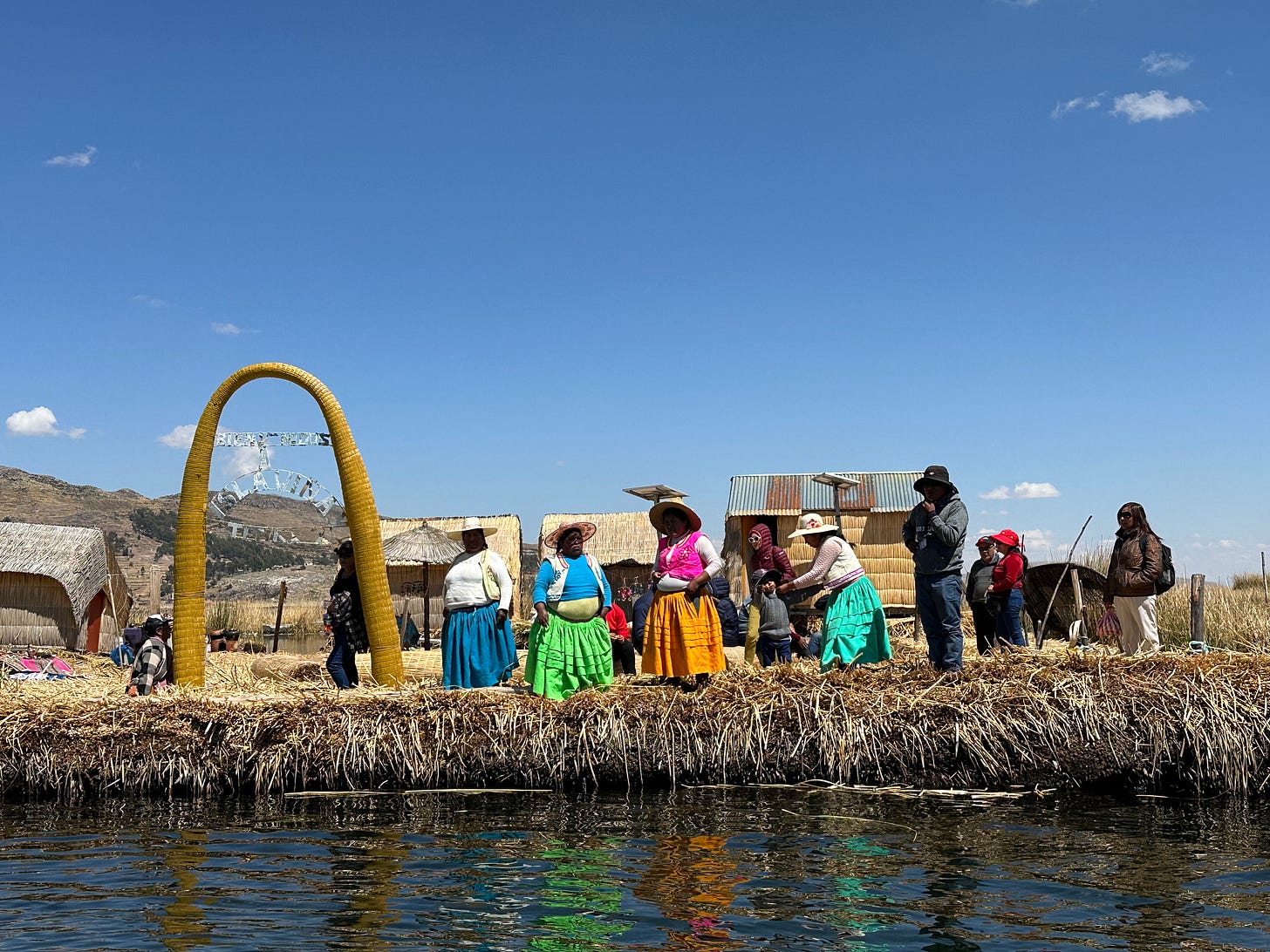Hi Friends,
We are about five weeks into our South American travels, and we’re now in Bolivia. After studying Spanish in Arequipa, Peru and hiking in the Colca Canyon, which I wrote about here, we left for Puno, a city on the edge of Lake Titicaca. From Puno, we took a boat to the Uros Floating Islands, an indigenous community that lives in the middle of Lake Titicaca on islands built of reeds.
We stayed on the Uros Floating Islands with a family for two nights. It was glamping without the glamour, though I kept reminding myself that this is how people live everyday of their lives, working day and night to cut more reeds to add to their floating islands, ferrying supplies back and forth from the mainland by boat, cooking for and cleaning up after tourists (including emptying the “dry toilets,” which is a system a little bit like a kitty litter box—essential to protecting the unique ecosystem and water they depend on).
In addition to tending to the tourists, the women weave incredible textiles to sell to tourists while the men go out and fish, tend to the pigs, and pursue other manly endeavors. I asked a local woman what would happen if a girl wanted to fish instead of weave, and she said that was not possible. “But what if…” I tried again. The woman shook her head and wagged her finger, so I stopped there.
The children also contribute to the family income. We took a boat ride, and a bunch of kids boarded our boat and sang a song. Afterward, one of the bigger girls came to me and said, “I’m Jasmine. I am 9-years old.”
In my poorly accented Spanish, I said, “I’m Suzanne. I am 54-years old. Very old. Like a little granny.” Jasmine laughed and nodded, that yes, I was just like an abuelita. Then she said, “I am here to collect my money for the song.” I handed over one Peruvian Sol and told her the song was beautiful. She and another little girl then climbed into a nearby boat to count their propinas.
We left the Uros Islands for Copacabana, Bolivia, and after spending about an hour filling out paperwork, making copies, and paying $160 USD, my husband finally got his visa. I’m traveling on my British passport, so I sailed through without having to fill out forms or pay for the expensive visa. From there, we headed to Copacabana, a lakeside village on the Bolivian side of Lake Titicaca.
From Copacabana, which is a lovely and colorful village, we headed to Isla Del Sol, another island in the middle of Lake Titicaca, this one much larger and made of earth and not reeds. There are no cars on the island; everything is transported through the hilly landscape on the backs of humans and animals. We brought our heavy packs with us, thinking we’d be dropped off on the south end of the island at our hotel. From there, we planned to hike across the island. But as it turned out, the boat dropped us off on the north side, a 7-mile trek at 13,000 feet in elevation, far from our lodging.
Despite our heavy packs, the hike was gorgeous, and we ended up making friends with a couple from Berlin. We’re lucky because until recently, it wasn't possible to hike across the island because of a dispute over tourism between the communities in the north and south; they erected a guard post to stop tourists from crossing from one side to another. A South Korean tourist tried to cross in 2018, and she was murdered.
Keep reading with a 7-day free trial
Subscribe to 52 Writing Prompts to keep reading this post and get 7 days of free access to the full post archives.








